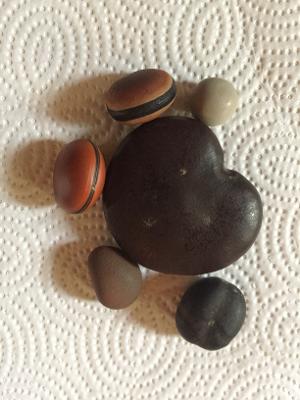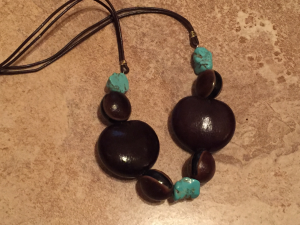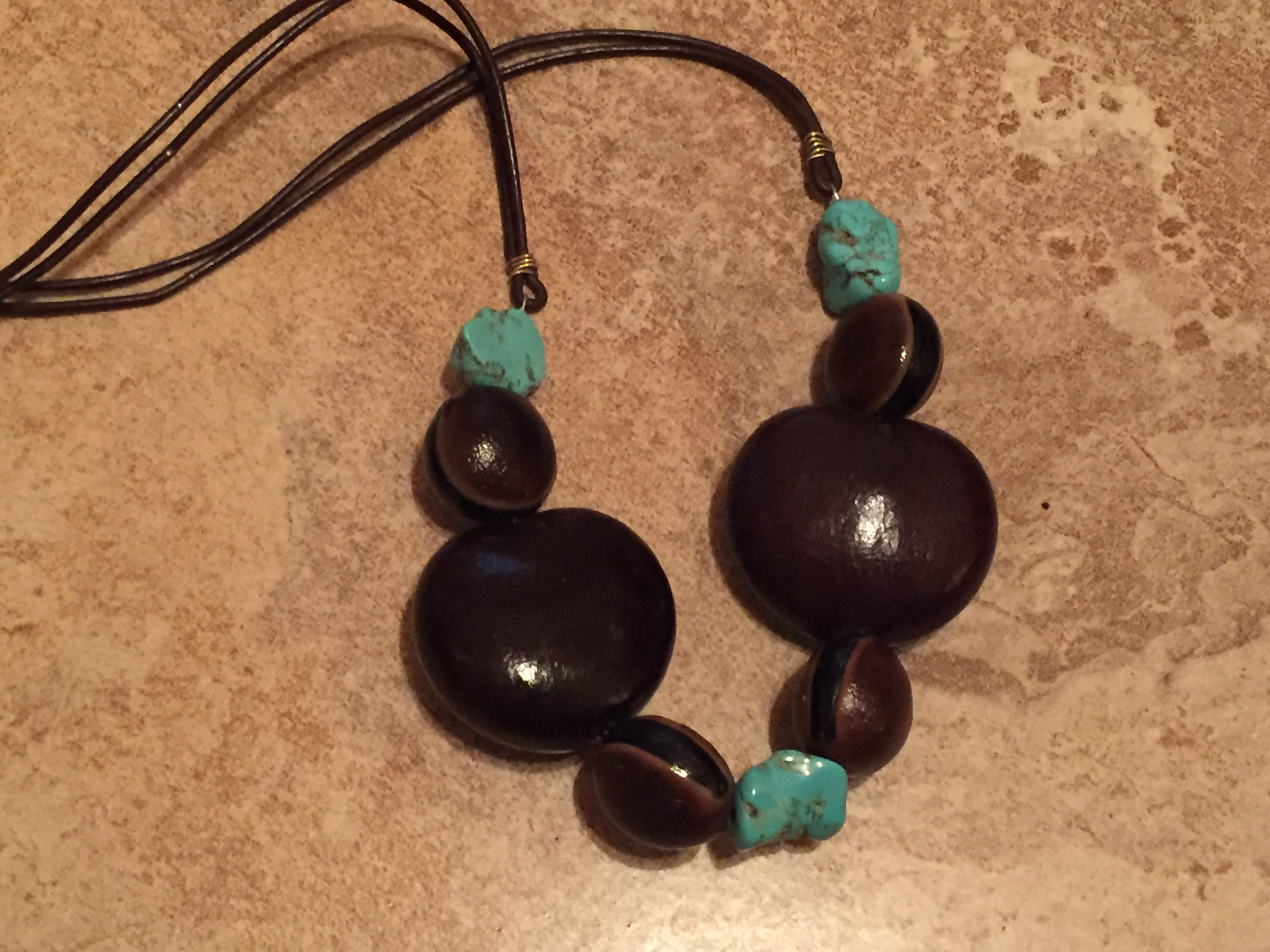by Linda Butcher

There has been little research done on sea beans. I suppose one reason is that most people don’t even know these floating seeds exist. Some of the research being done on sea beans includes flotation, plant dispersal, effects ofocean current, when to collect, growing, and polishing. The reason I call them the top five is because they are relatively easy to find on our local beaches and they are my favorites.
The SEA HEART is the largest of the tropical sea beans. It is common on our beaches. It is mahogany in color with a hard outer coating. Some of the seeds are distinctively heart shaped. It’s native to the American tropics. The yard long pods contain five to fifteen seeds and hang from thick woody vines that often engulf the trees that support them. As most sea beans it has an airspace inside that provides buoyancy enabling it to make long sea voyages. They will take a high polish and are often used in jewelry.
The HAMBURGER BEAN is also one of our common sea beans. It is called hamburger bean as it resembles a miniature hamburger. They occur in two varieties, brown and red. They vary somewhat in size, mostly dime to quarter size. Their range is South and Central America as well as the West Indies. One species is found in West Africa. They grow on semi-woody vines that can engulf trees and shrubs. The seed pods are covered in stinging hairs which protect them from being eaten by insects, birds, and other animals. Maximum flotation time is five years.
The SEA PURSE can be confused with the hamburger bean. They can be told apart by their hilums. The hilum is the seam that goes around the middle of some sea beans. It is much thinner on the sea purse and usually marked by a thin tan margin. There is a great variation in color. They range in color from brown, rust, and caramel. Some have dark mottling. The plant is a woody vine that grows well back from the beach along rivers and streams in Central America. The sea purse in much less common than the hamburger. Maximum float is fourteen years, but most will sink before then.
MARY’S BEAN is a true favorite among collectors. It is a member of the morning glory family. It’s a high climbing vine of Central America, Mexico, and the Caribbean basin. The seeds are usually a lustrous black to dark brown and have an indented cross on the dorsal side. More common on Texas beaches than Florida, but not considered common anywhere. Maximum flotation time is ten years under test conditions.
NICKERNUTS Come in three colors: gray, brown, and yellow. Gray nickernuts are not rare, but are not as common as the brown nickernuts on the Texas coast. The gray ones are common in Florida as the plants have naturalized there. The seeds are borne from spiny pods. Nickernuts are in the bean family and are not actuallynuts. There are about 100 species worldwide in tropical and subtropical regions. Two plants have been found growing at Laguna Atascosa National Wildlife Refuge. There was one growing at Isla Blanca Park along side the board walk just north of the pavilion, but was removed by park employees because the prickly stems kept encroaching on the boardwalk. The entire plant has thorns similar to blackberry bushes.
We have never been able to determine which of the nickernut plants we have since they never produced seeds to our knowledge. We think the plants clusters of yellow blooms either need several plants to accomplish pollination or it’s possible that the insect species that pollinates them does not occur in our area.
The brown nickernut is somewhat larger than the gray. They vary from rusty brown to chocolate. The rarest of the nickernuts found on the coast of the United States is the yellow nickernut. They are very similar in size and shape as the gray. Out of 76 that were tested for flotation only one floated. This is probably why they rarely reach our shores.

The best time to look for sea beans is at low tide. Search in the front part of the dunes at the highest tide line. They are usually more plentiful after a storm that washes in large amounts of sargassum.
Visit www.seabean.com to learn more about sea beans.


Leave a Reply